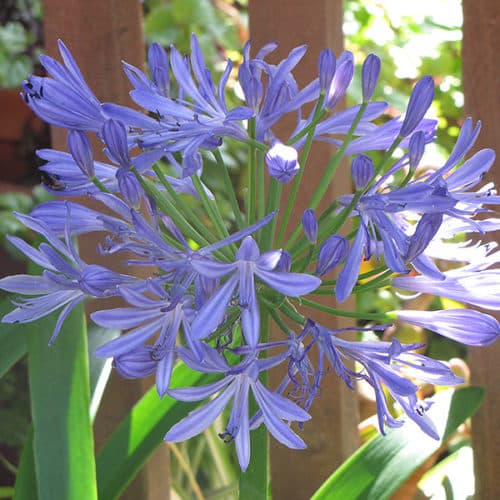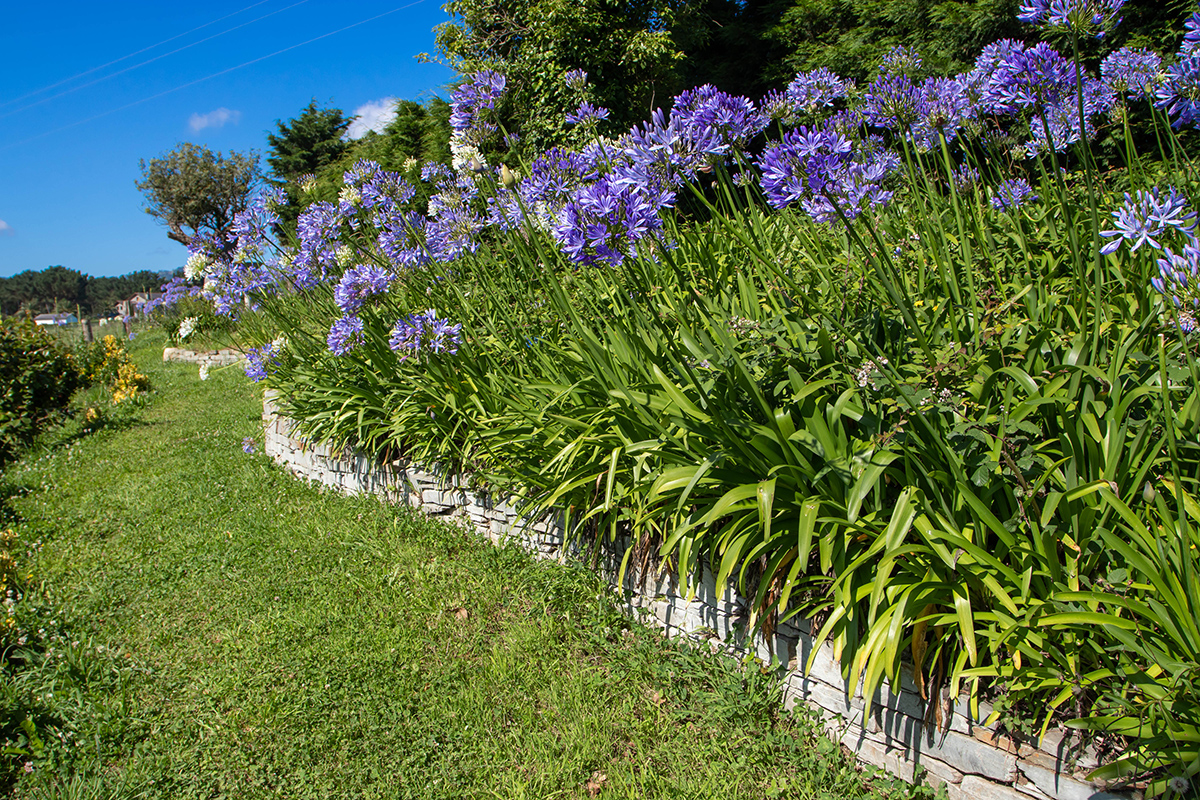Agapanthus Proliferation: Tips for Expanding Your Plant Collection
Agapanthus Proliferation: Tips for Expanding Your Plant Collection
Blog Article
Mastering the Art of Agapanthus Care: Important Actions for Healthy Growth and Vibrant Blossoms
In the realm of horticulture, the growing of agapanthus stands as a satisfying undertaking for those that seek to nurture these elegant flowering plants. With their striking blossoms and stylish foliage, agapanthus has captured the interest of garden enthusiasts worldwide. Nonetheless, accomplishing ideal development and vivid blossoms requires a nuanced technique that incorporates different vital actions. From choosing the best selection to grasping pruning techniques, the trip in the direction of growing thriving agapanthus plants is diverse and holds the key to unlocking the complete potential of these botanical treasures.

Selecting the Right Agapanthus Variety

When picking the appropriate Agapanthus variety for your garden, think about factors such as environment viability, bloom color, and growth behavior. Furthermore, take into consideration the environment in your region to guarantee the Agapanthus selection you choose can prosper in your details conditions. Understanding the development habit of different Agapanthus selections is crucial for appropriate positioning within your yard.
Perfect Growing Problems
Taking into consideration the optimal environmental needs is crucial for successful Agapanthus cultivation. Agapanthus flourishes in well-draining soil with a somewhat acidic to neutral pH degree. When planting, pick a place that receives full sunlight to partial shade. In hotter climates, giving some mid-day color can protect against scorching of the leaves. Agapanthus plants are delicate to chilly temperature levels and need to be secured from frost throughout cold weather.
To make certain healthy and balanced growth and vivid blossoms, plant Agapanthus bulbs at a depth of concerning 2-4 inches and area them 8-12 inches apart. Adding raw material, such as garden compost, to the dirt can boost water drainage and fertility, promoting durable origin advancement. Mulching around the base of the plants helps preserve wetness and reduces weed development. Normal watering is essential, particularly during the growing period, to maintain the soil consistently moist but not saturated.
Watering and Fertilizing Tips
Maintaining appropriate moisture levels and supplying necessary nutrients are essential components in the treatment routine for Agapanthus plants. When it involves sprinkling Agapanthus, it is important to strike an equilibrium. These plants prefer regularly damp dirt however are at risk to root rot if overwatered. During the expanding season, water deeply when a week, making sure the dirt is well-draining to stop waterlogging. In hotter climates or during durations of drought, more frequent watering may be required to maintain the dirt uniformly moist. However, lower watering in the winter to avoid water logged problems.
Feeding Agapanthus is vital for advertising healthy and Find Out More balanced development and prolific blossoms. Use a balanced plant food, such as a 10-10-10 formula, in the early springtime as new development arises. By following these watering and feeding ideas, you can ensure your Agapanthus plants prosper and produce vibrant, lasting blooms.
Pruning Methods for Agapanthus
Pruning Agapanthus plants at the ideal times and with correct methods is important for preserving their health and advertising optimal growth and blooming. The optimal time to trim Agapanthus is in late winter or early springtime prior to new growth go emerges. Begin by removing any kind of yellowing or dead leaves near the base of the plant. Cut them as close to the ground as feasible without damaging the arising shoots.
Deadheading invested blossoms can additionally reroute the plant's energy right into creating more blooms instead than setting seeds. If you desire to accumulate seeds for breeding, leave some blossoms to dry and mature on the plant.
Bear in mind to use tidy, sharp tools to make accurate cuts and minimize the risk of introducing conditions. Agapanthus. Routine trimming will certainly aid maintain your Agapanthus looking cool and healthy while guaranteeing a plentiful display screen of lovely blooms
Handling Typical Insects and Illness
After guaranteeing appropriate pruning strategies for Agapanthus, it is crucial to attend to typical insects and diseases that can affect the health and vitality of these plants. One common insect that influences Agapanthus is the Agapanthus gall midge.
Another typical problem is fungal leaf spot, which presents as dark sores on the leaves. To stop fungal conditions, make sure good air circulation around the plants, stay clear of overhanging watering, and remove any kind of infected fallen leaves without delay. In addition, Agapanthus plants can experience from root rot check here if they are planted in improperly draining soil. To avoid this, plant Agapanthus in well-draining soil and avoid overwatering. By being alert and taking timely activity versus diseases and parasites, you can assist your Agapanthus plants grow and produce vibrant blossoms.

Final Thought
In final thought, understanding the art of agapanthus care includes selecting the best range, offering excellent growing problems, proper watering and fertilizing, proper pruning methods, and resolving usual pests and diseases. By complying with these essential actions, you can make certain healthy growth and lively blooms for your agapanthus plants. Keep in mind to consistently monitor and preserve your plants to advertise their total health and durability.
To make sure healthy development and dynamic flowers, plant Agapanthus light bulbs at a deepness of about 2-4 inches and space them 8-12 inches apart. By adhering to these watering and feeding pointers, you can guarantee your Agapanthus plants thrive and create dynamic, durable blooms.
One usual bug that influences Agapanthus is the Agapanthus gall midget. Furthermore, Agapanthus plants can endure from root rot if they are planted in poorly draining pipes soil. By complying with these essential actions, you can ensure healthy development and vibrant flowers for your agapanthus plants.
Report this page